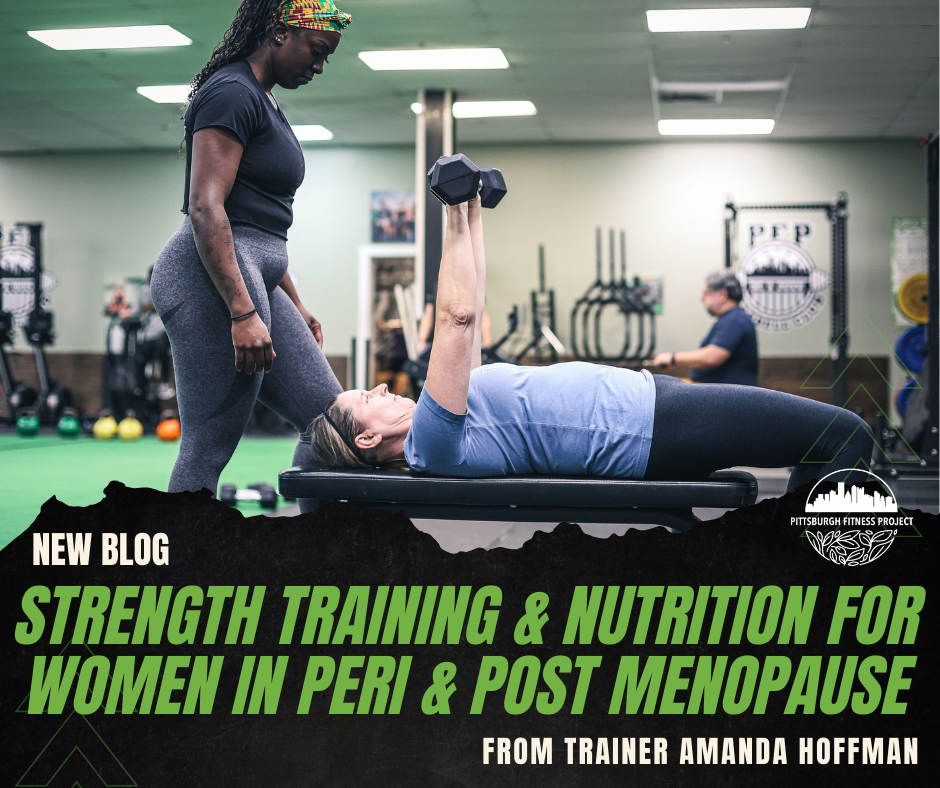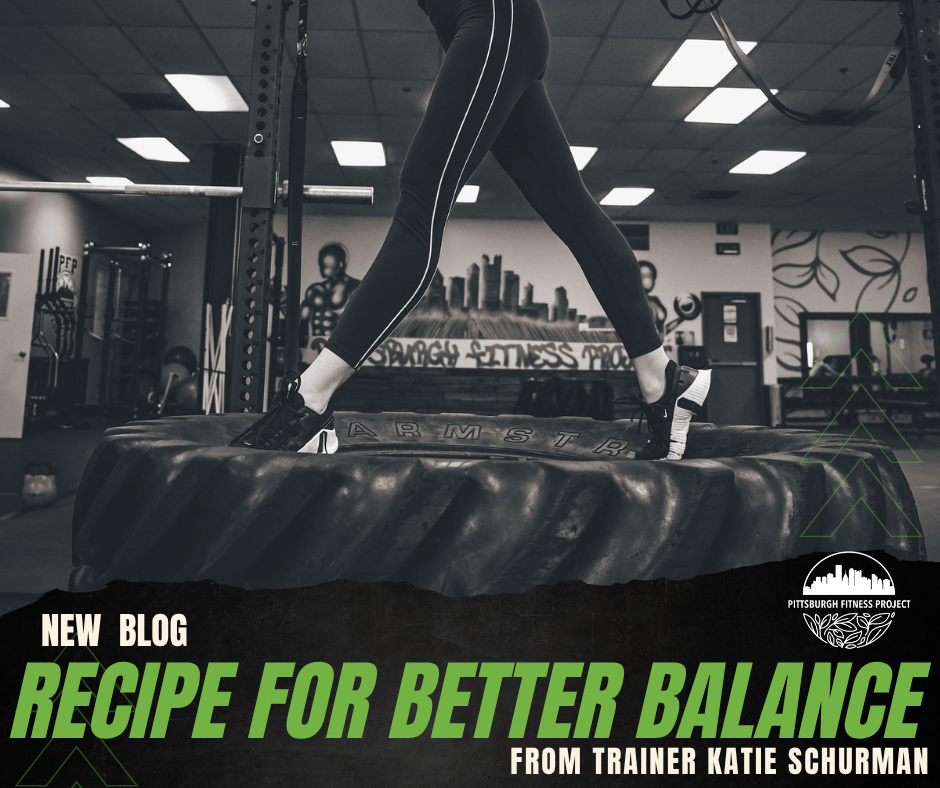
COLD WEATHER WARM-UPS
Fall is finally here: mornings are cooler, leaves are changing, and exercising outside can get more comfortable.
But as temperatures continue to drop, warm-ups become even more important. Let’s look at why cold-weather warm-ups matter.

JOIN OUR DADFIT COMMUNITY!
Calling all Pittsburgh dads! Whether you’re chasing toddlers, coaching sports, or just looking for a way to get back into shape, Pittsburgh Fitness Project (PFP) has created the perfect program just for you. Introducing DadFit — a supportive, motivating fitness community made for fathers who want to feel stronger, move better, and connect with other dads.
And the best part? We’re kicking things off with a FREE DadFit Community Class — and you’re invited!

INTRODUCING PFP DADFIT
PFP Dadfit is less about building 6-pack abs and more about building a pack of 6 dads committed to bettering themselves together. The strength of the dad is in the pack. The strength of our pack is in each individual dad. Let's grow in fatherhood together.

STRENGTH TRAINING & NUTRITION FOR WOMEN IN PERI & POST MENOPAUSE
Research shows that the perimenopausal years (typically in your late 30s to early 50s) are the years with the most pronounced shifts in body composition: increased fat mass, reduced muscle mass, and elevated abdominal. As if we needed any more barriers, most research in health and fitness is done on men. Let’s dive into what research on women of this age group recommends.

TRAINING FOR YOUR GOALS
It’s crucial to be clear about your goals, as this helps your coach understand you better. If you’re interested in building strength, modifying your body composition, or simply wanting to make it through the day more easily, it’s helpful for us to know, as that will give us direction for what should be included in your training program.

THE REAL FLEX: RELIABILITY, ACCOUNTABILITY, & CONSISTENCY
We train to get stronger - physically, mentally, emotionally. We chase progress in the gym, track numbers, show up for the hard reps. But what really holds all of that together? It’s not just muscle. It’s not just discipline. It’s integrity.

RECIPE FOR BETTER BALANCE
Balance doesn’t just help you move more gracefully—it helps you train more effectively, avoid injury, and feel stronger in everything you do. Whether you’re lifting weights, doing cardio, or trying to move better in daily life, improving your balance will level up your fitness.

THE MENTAL HEALTH BENEFITS OF INFRARED SAUNAS
As we continue celebrating Mental Health Awareness Month here at Pittsburgh Fitness Project, we’re turning the spotlight on one of the most relaxing tools in our recovery lounge: the infrared sauna.
You probably already know that getting a good sweat can help you feel physically refreshed. But did you know that a session in an infrared sauna can also lift your mood and support your mental well-being? Let’s take a look at how this powerful combo of heat and light can support both your body and your brain.

MENTAL HEALTH & EXERCISE: THE POWER DUO
Have you ever felt so overwhelmed that tears just started flowing out of nowhere? Or have you ever had someone ask you to do a basic task, and all you could think was, "I’m going to put your head through the wall"? Ever gone through something emotionally draining, did something physical, then felt this weird sense of relief or calm? That’s the power of exercise on your mental health.
Exercise isn't just about getting your body moving—it's about connecting with your emotions, relieving stress, and taking control when life feels like it's spiraling. So, during Mental Health Awareness Month, let’s talk about how movement, in all its forms, can be your ally in maintaining mental well-being.

HOW TO SET FITNESS GOALS THAT ACTUALLY WORK
Setting fitness goals is one of the most powerful ways to maintain momentum in your health and fitness journey. Whether you’re brand new to exercise or have been training for years, having clear goals gives your workouts direction, purpose, and motivation. Here’s why goal-setting is essential and how to set realistic ones that keep you on track.

BREAKING THROUGH PLATEAUS WITH NUTRITION GOALS
If you’ve ever felt stuck — like you’re eating “pretty well” and training hard but not seeing results — you’re not alone. Nutrition plateaus happen to everyone, whether you’re chasing fat loss, muscle gain, or performance. The key isn’t to give up, it’s to step back, assess, and make smart adjustments. Here’s how to break through a nutrition plateau.

OVERCOMING NEW YEAR RESOLUTION PITFALLS
At the start of the new year, many of us set intentions to improve our fitness and wellbeing. As time goes on, it can become quite easy to fall into some common pitfalls. In fact, most resolutions get dropped by the second week of the year! As you get back on track, the key is to focus on goals that are realistic, sustainable, and designed for long-term success. Let’s talk about some common pitfalls and tips for staying on track with your fitness journey in 2025.

JASON’S KEY TO NEW YEAR RESOLUTIONS
Now that the celebration is over and we most likely put on a couple more pounds from a loved one's pies and/or cookies. It might be time to start doing the New Year’s resolution. For Jason, the key to this has been doing something he already loves or figuring out how to love something new.

NEW YEAR, NEW YOU…
It’s that time of the year again when we all collectively agree to pretend that we’re suddenly going to transform into perfect, glowing versions of ourselves in 24 hours. Resolutions are set, gym memberships are activated, and Pinterest boards are filled with dreamy salads and motivational quotes. But by February, it’s usually just us, a bag of cheesy Doritos, and a firm belief that we were "probably too ambitious" in our goals.
Well, this year, let’s ditch the "I’m going to work out every day and eat only kale" approach. Instead, let’s go for bite-sized resolutions—tiny, achievable, totally doable goals that don’t make you want to cry by the end of January. Let’s talk fitness, nutrition, and self-care in ways that won’t make you feel like a failure before the first snow melts.

WHAT TO DO IF YOU DON’T ACHIEVE YOUR GOAL
Goal setting is essential for many areas of life and will help stay disciplined and feel rewarded if accomplished. Whether it's a fitness milestone, career advancement, personal growth, or even a creative pursuit, the anticipation of achieving something meaningful drives us forward. But what happens when things don’t go as planned? When you don’t achieve your goal, it’s easy to feel disheartened or even question your abilities. The key, however, is to use the experience as feedback, rather than see it as failure. With the power of reflection and intention you can move forward and reestablish your goal.

5 TIPS FOR SUSTAINABLE HABIT CHANGE
Changing a habit, whether forming a new one or breaking an old one, can feel overwhelming, intimidating, and slow. With the right strategies, it is possible to make sustainable changes. Habit is about creating systems and setting yourself up for success. Here are five tips backed by psychology and behavior science to help you make positive changes in your habits.

MEASURING PROGRESS: BEYOND THE SCALE
Tracking your progress in the gym is an important thing to do so you can get stronger, feel healthier, and feel a sense of accomplishment in what you’re doing. But what does that look like? The truth is that there are so many ways to measure your progress, and this goes far beyond aesthetics or a number on the scale. I’m going to explain the many ways you can do this so you can ensure you’re getting the most out of your training physically and mentally.

HOW LONG SHOULD YOUR TRAINING CYCLES BE?
When it comes to training, there's a certain point where your body will need some sort of change or variation from what you are currently doing. Why does this happen? Well, our bodies are very adaptable. This means that while something may seem difficult at first if you continue to do that same movement or training, your body will adjust, and it will become easier. This sounds great initially, although, as you have probably noticed, you reach plateaus in your training. Either you stop running that mile faster, or you can't lift that one more pound on the bar. So, what do we need to do to get the results we want? We have to slightly modify our training and add a new stimulus so our body can improve.

MASTERS TRACK & FIELD
Every four years, the Olympics bring excitement as some of the world’s greatest track and field athletes compete for gold. The Paris Olympics did not disappoint! Check out this recap of the Masters of Track and Field!

A BEGINNER’S GUIDE TO ACHIEVING YOUR FIRST PULL-UP
Whether you're new to fitness or have been working out for some time, the pull-up is one of the most challenging exercises and is often seen as a milestone. Achieving your first pull-up requires time, technique, and repetition. If you're aiming to conquer your first pull-up, this guide will take you through the steps to get there.
